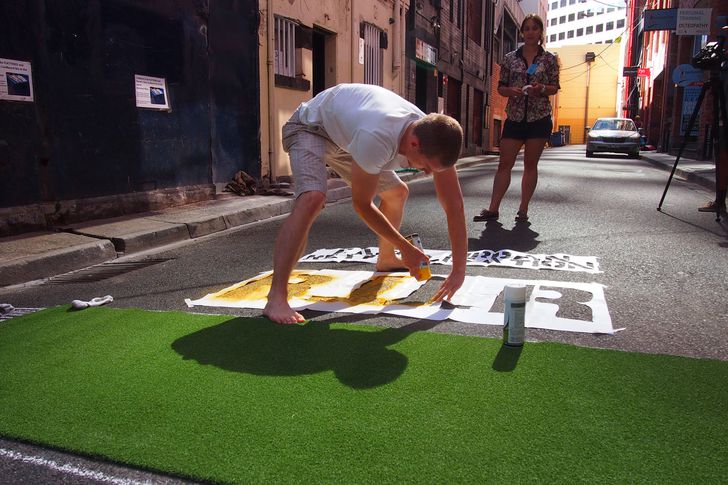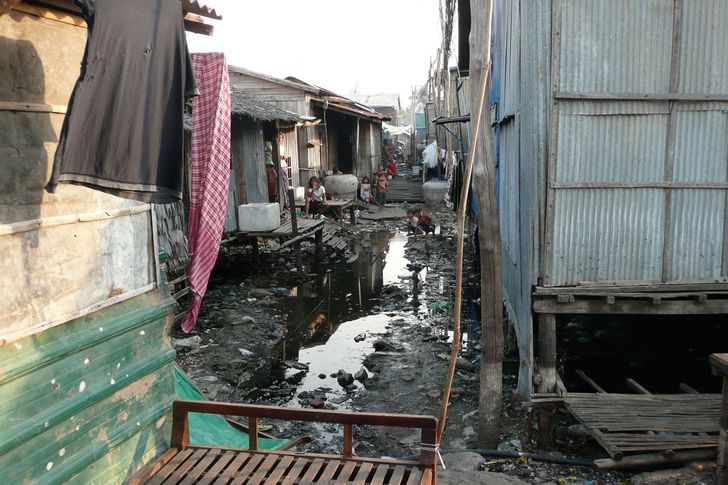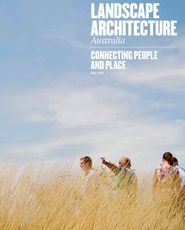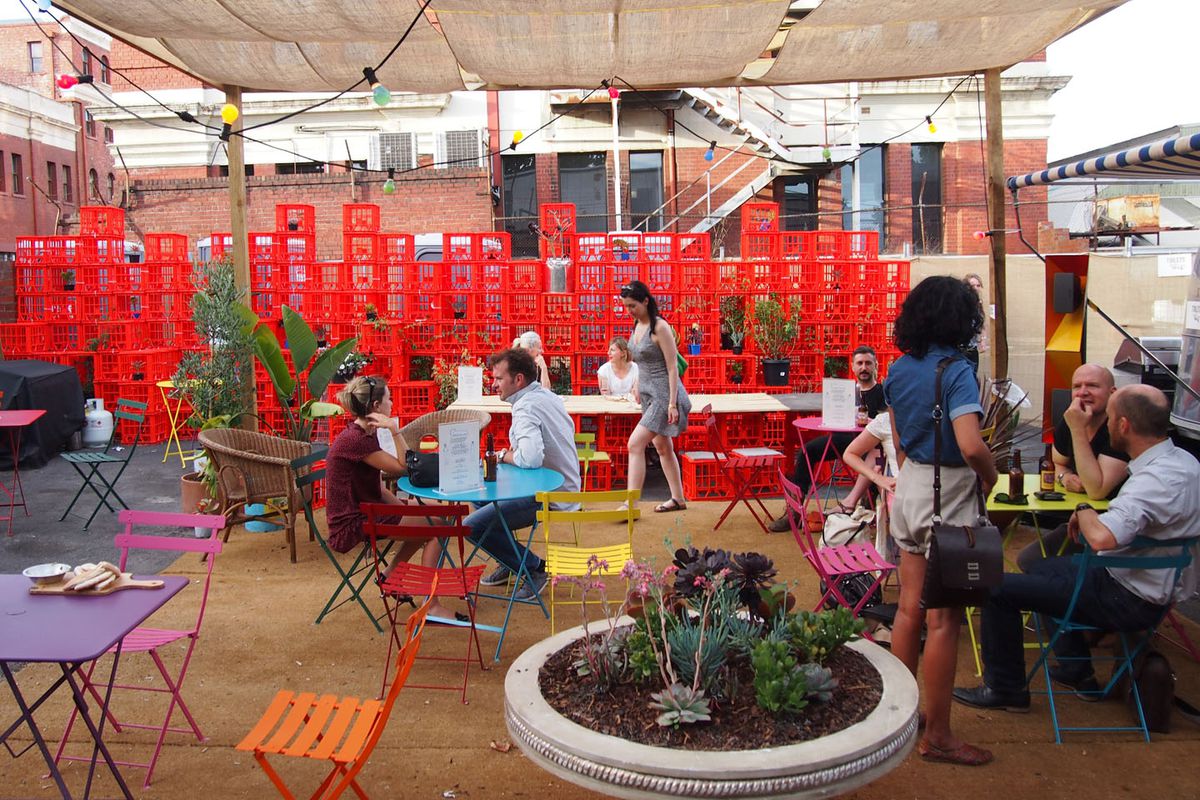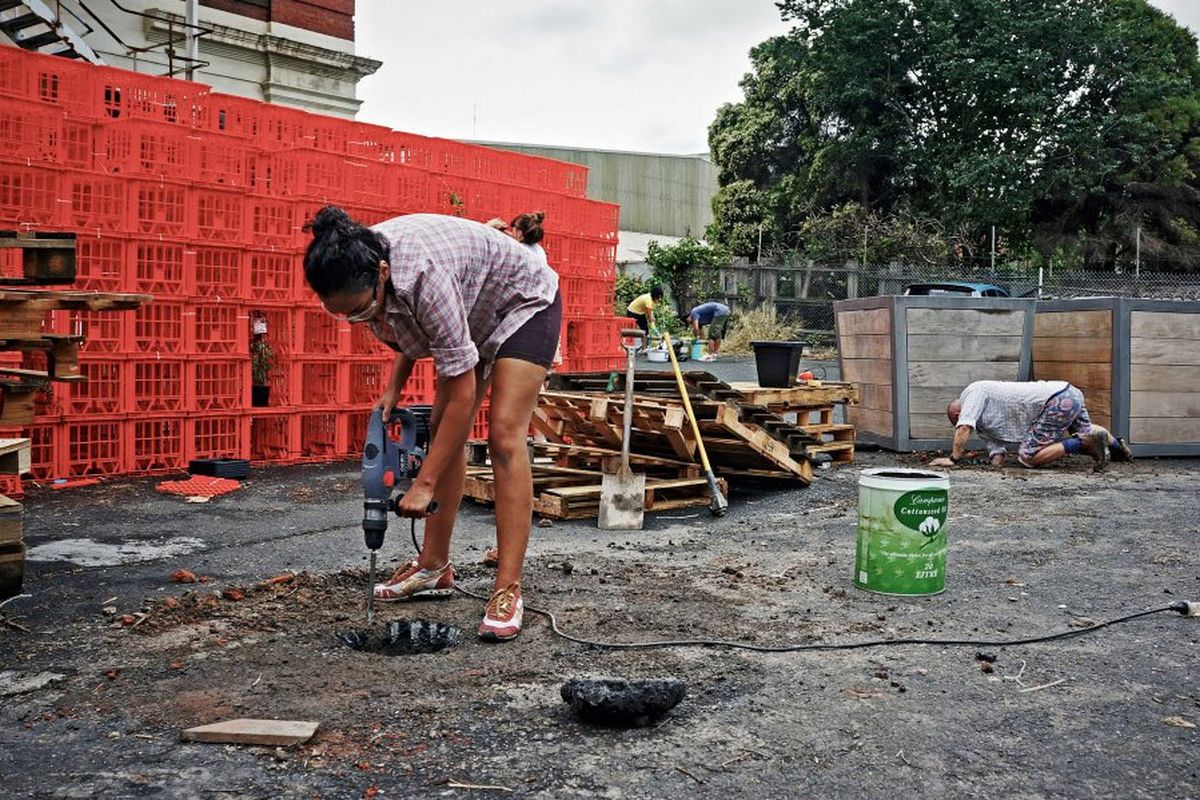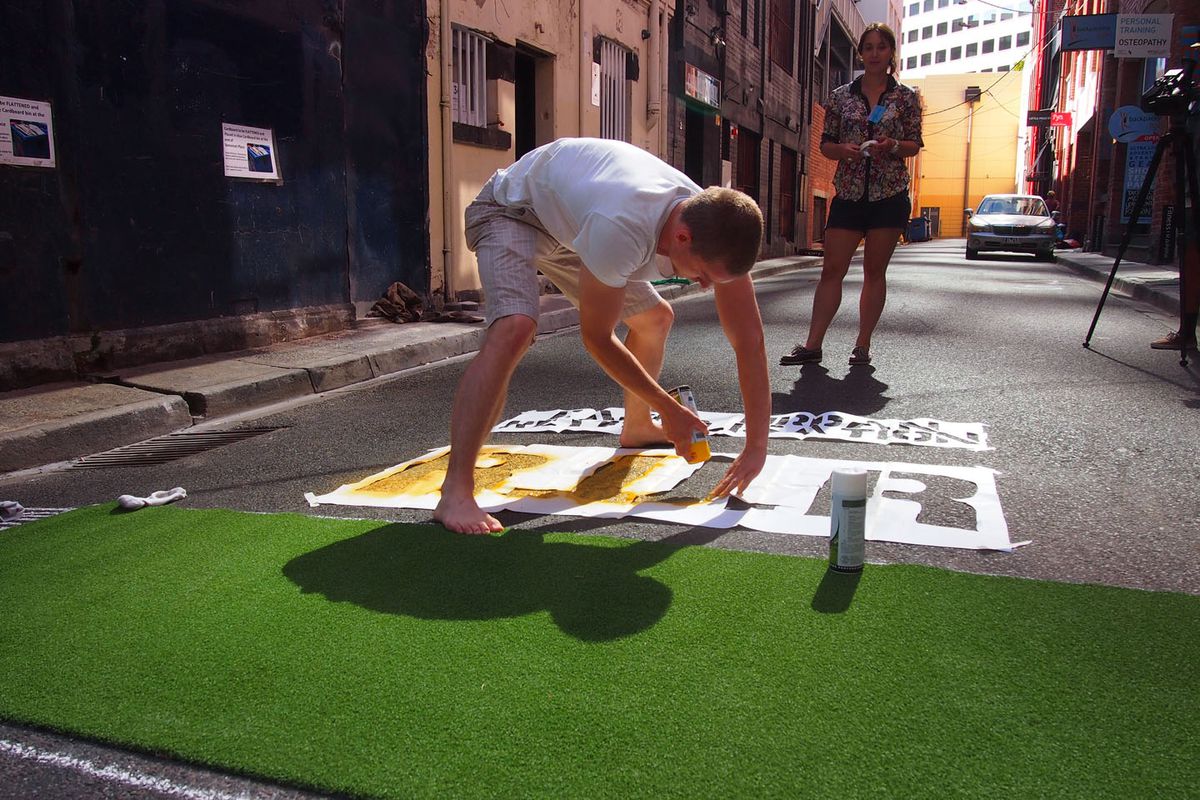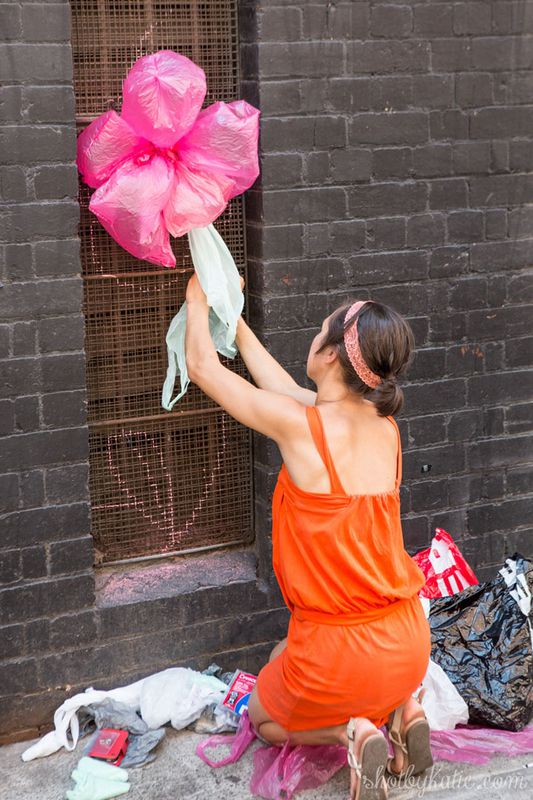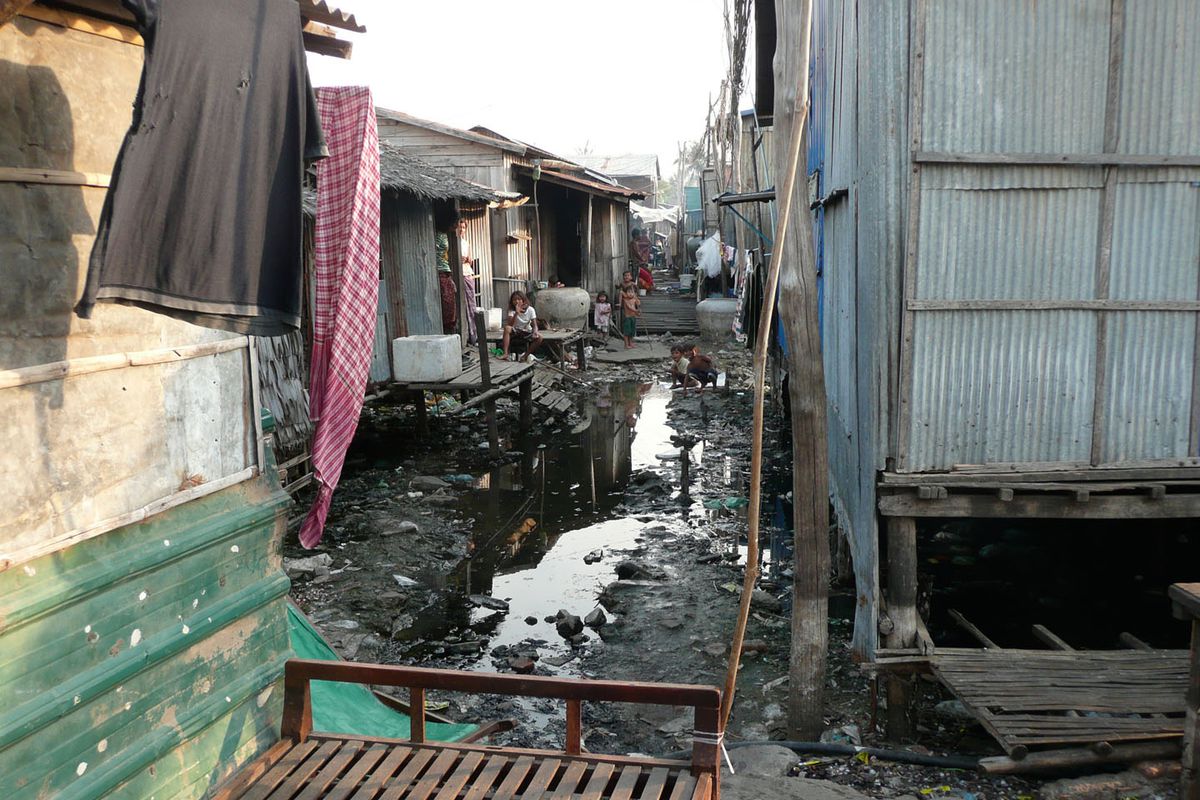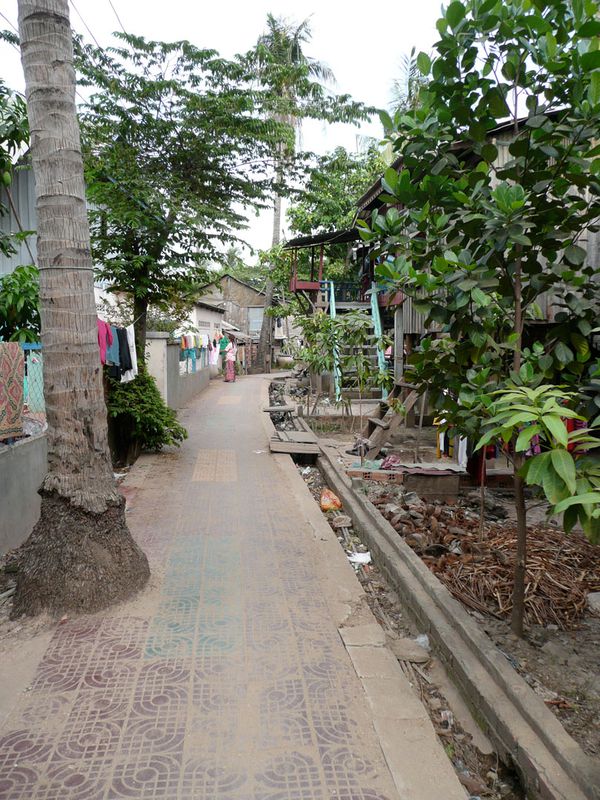For many landscape architects working on public engagement projects, there has been a light bulb moment of sorts – a person, place, project or sticky issue that has caused them to challenge the boundaries of the profession and find new ways of communicating and meaningfully working with communities. It is these projects, individuals, processes and, at times, paradigm shifts, that we have begun to question and explore as part of this issue of Landscape Architecture Australia.
A question of process
For myself that light bulb moment was a person, Sopheak, a community leader living in Roy Reah, a Cambodian slum. I had the privilege to work with Sopheak on a community-led urban upgrading project in 2009. Our brief for the project was to design a school and surrounding landscape that would meet a pressing need for children’s education. While the brief was well put together, extensive community participation revealed that the problem perceived by the community was not in fact school infrastructure, but major annual flooding. Children (or indeed anyone) could move around the community during the wet season, which had a substantial impact on the economic, environmental and social viability of the community. Through a collaborative design process, our team was able to instead design a series of elevated footpaths with sub-surface drainage, connecting existing places of education and commerce, and providing a much simpler, cheaper solution to neighbourhood improvement than a school building would have been.
In this instance, landscape architecture was not only used as a tool to create integrated, functional and aesthetic spaces, but also as a framework within which communities could identity problems, come up with ideas, test briefs, prototype solutions and realize long-term positive change. Hamdi describes this as a “process of enablement”1 where the measure of success of a project is less oriented towards the quality of the aesthetic, and more towards the level of participation, community empowerment and sense of local ownership.
A melbourne laneway is transformed during a two-hour community prototyping workshop.
Image: Katie Dutton
Towards a community empowerment approach
While this example may seem like a small project in a faraway place, its lessons for the current and future role of public participation in landscape architecture – like many examples we have considered as part of this issue – are significant. In writing this closing statement, I want to explore key ways in which the future of mainstream practice can become more oriented towards such a “process of enablement.” This is not in order to address some altruistic notion of community; rather, it is a necessary response to major changes in human settlements.
The need for a shift in professional perspective is clear: by 2050, one in three people in the world will live in a slum,2 making people like Sopheak the new face of urban development. With slums becoming the dominant human settlement typology in the world, adapting the profession to consider issues of effective public participation, cross-cultural collaboration, and working to build the capacity of the poor and disadvantaged will not be a choice, but a necessity for best practice.
Moreover, while Australian cities seem a long way from the slums of Phnom Penh, there are nevertheless huge challenges. One in twenty Australians is experiencing the social and economic problems caused by lack of infrastructure; insufficient public transport; loneliness and isolation; and insufficient parks, open space and other public amenities. There are one million Australians living in such social exclusion, particularly youth, the elderly, and Indigenous and culturally and linguistically diverse populations.
Landscape architects and others must become facilitators of community energy and ideas, working closely with the local change agents to pass on our skills (capacity building) and to help implement simple, good, achievable ways to make cities more liveable and sustainable.
The Roy Reah community in Phnom Penh flooded regularly, making basic access a challenge.
Image: Codesign Studio
Redefining our role
Urban and environmental challenges, both in Australia and overseas, are beyond the capacity of the built environment professions to “solve” by sticking to our business-as-usual consultancy paradigm. We need new models. Our work at CoDesign Studio – a social enterprise that methodologically sits at the intersection of design and community development – has been responding to this challenge by exploring how landscape architecture can be used as a process to deliver measurable increases in levels of community empowerment, social capital and environmental improvement.
This issue has similarly identified a number of emerging challenges and design approaches. In closing I want to build on three issues relating to the role of landscape architecture in public participation: firstly, the problem of disconnection between designer and public; secondly, the need for more inclusive approaches to public engagement, particularly with respect to working with hard-to-reach groups; and finally, the need to generate impact at scale.
The problem of disconnection between designer and public
In their introduction to this issue, Greg Grabasch and Daniel Firns of UDLA highlighted how traditional design processes involving physical site analysis and studio-based documentation are too often disconnected from the public, which the design outcomes are intended serve. While landscape architectural efforts have moved strides ahead in improving the sustainability and liveability of communities, in other ways they have failed to deliver meaning and equality. Design ideas, while worthy, can feel imposed if there is not an appropriate level of community “buy-in.” Grabasch and Firns go on to advocate for a dynamic approach to landscape architecture where process is marked by a continuous feedback loop between communities, decision makers and designers, leading to robust, flexible solutions. Improved connections between designer and public will lead to more sustainable, inclusive neighbourhoods.
The need for more inclusive approaches to design
While public participation has been proven to be a key driver for improved happiness, wellbeing and belonging,3 methods for its integration with landscape architecture remain limited. This article does not suggest that public participation should replace the role of the expert, a common misconception, but argues that more inclusive approaches to design must evolve to respond to the needs of a diverse public audience, including hard-to-reach groups.
This issue has highlighted some emerging approaches, including some unlikely sources. In his article on contemporary design dialogue, Dr David Deeley describes scenario-planning as a framework for landscape process, a method originally developed by military intelligence. Other examples include working from community-generated briefs, something demonstrated effectively by Kounkuey Design Initiative in Nairobi; using temporary pop-up spaces and events in the landscape to establish local dialogue, such as the Docklands Urban Realities program; online participation such as that used in the Everything Except Walk installation in Melbourne; and community workshops, undertaken as part the Vietnam Veterans Commemorative Wall in Seymour, Victoria. While there is no one-size-fits-all solution, there are a number of ways in which the profession can open up choices for communities, rather than closing them down.
Generating impact at scale
Many of the interventions described in this issue are small, rapid, temporary, and often cost-effective solutions to generating positive change. While the scale of individual projects may be small, the level of social impact cannot be underestimated. The impact of engaged, empowered citizens in transforming communities, public spaces and cities is substantial. Tackling the scale challenges of urbanization and environmental issues relies not only on transforming spaces, but also on empowering people.
Not why, but how
Landscape architecture has an enormous capacity to demonstrate leadership with regard to inclusive public participation among the design professions, and to be adaptive and responsive to urban and environmental change. In this issue we have sought to answer not why we should engage with communities, but how. The challenge then is to act not when, but now. As Gaétan Siew, former president of the International Union of Architects said, “Another 35,000 arrive in the slums of Brazil every month. You can’t wait until Monday to tackle this.”4
1 Nabeel Hamdi, The Placemakers Guide to Building Community (Tools for Community Planning), (London: Routledge, 2010).
2 UN-Habitat, State of the World’s Cities Report: Prosperity of Cities, (Nairobi: UN-Habitat, 2012).
3 Brotherhood of St Laurence, “Social Exclusion Monitor,” Brotherhood of St Laurence website, bsl.org.au/Social-exclusion-monitor (accessed 17 June 2013).
4 Amelia Gentleman, “Architects are not ready for an urbanized planet,” The New York Times, 20 August 2007, nytimes.com/2007/08/20/world/asia/20iht-letter.2.7182262.html (accessed 17 June 2013).


